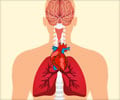India aims to bring down the prevalence of TB by 50 per cent by 2015 and to completely eradicate it by 2050.
Creating awareness about TB forms the backbone of the efforts taken to eradicate this dreadful disease. It is a clause of the DOTS programme, and is mostly done through Anganwadis and other grass root level forums.
Sister Mary Margaret, in charge of a voluntary organization in Kottayam, Kerala says, 'We have tie-ups with anganwadis who direct the patients to us. We began the work in 2002, and the number of patients coming to us has increased over the years. This is primarily due to awareness'.The Revised National TB Control Programme (RNTBC) has been highly effective in bringing down the numbers of TB patients, claims Dr. V. Subramaniam Raja, medical consultant for Tamil Nadu chapter of RNTBC. Till date, about 7.7 million patients have been treated. The death rate has been brought down from five lakh per year to 3.3 lakh after the programme was launched.
'Also TB is spotted less among children, which is an indicator that the disease is less prevalent in the society. TB bacilli shows up, after remaining dormant post contraction, when the immunity system cracks. It is easier for children to contract TB as they have low immunity levels,' Dr Raja points out.
Hundreds of children still die of TB and, women patients die as they are abandoned. The situation is worser in prisons as the prevalence of TB among the inmates still runs high—about 100 times more -than in the world outside.
Also, the country still does not have a proper scheme, to tackle TB among AIDS patients, who contract the disease fast due to their compromised immunity levels. Though in place from 2001, the RNTBC tie-up with National AIDS Control programme actually got going only last year.
Yet another problem is that of patients seeking private practitioners for TB cure. The RNTBC has been able to diagnose only 70-75 per cent of the TB patients, as the remaining 30 per cent go to private medical practitioners, who do not have a standardized treatment procedure. Hence while the success rate in RNTBC is 85 per cent, it is just 40 per cent in the private field, experts say.
'We have now come with a Private-Public Mix, called PPM, by which we will provide drugs and treatment procedure to the private practitioners,' Dr Raja says. 'RNTCP has also developed partnerships with 2300 NGOs, over 15,000 private practitioners, 246 medical colleges and over 120 corporate sector health facilities. The programme is planning to further enhance tie-ups with non-governmental, faith-based and community organizations', he added.
Most of the TB patients are poor. Increasing rich-poor divide adds to more number of people contracting the disease and a greater percentage among them opting out of treatment as it is long drawn. Substandard living conditions, with migrations on the rise, further complicate the picture.
Doctors, whether in public or private sector, are not serious in implementing DOTS, many suspect. Anti-TB drugs are prescribed, with no heed to the dosage by doctors, as awareness level among them about DOTS (as per the RNTBC programme) is poor. Then, there is the never-ending problem of the quacks.
The public have not been made sufficiently aware of the magnitude of TB epidemic in the country. Hence they remain insensitive to the issue and continue to regard TB eradication as a government responsibility. The national media, NGOs, politicians, professional organizations of doctors, all remain indifferent to the issue, it is widely felt.
Lack of political will is another problem. Politicians are largely not empathetic and, they seem to believe that their contribution towards TB eradication ends with posing for pictures during occasions such as the National TB day.
There are still districts in India that have to be covered under the DOTS.
Incentives such as mid-day meals for TB patients, which could work magic in bringing the patients regularly for uninterrupted treatment, are yet to materialize despite repeated pleas from various quarters.
India has 3 targets to achieve -
• Bringing down the mortality rate to one death per lakh population
• Keep pace with the global target of bringing down the prevalence by 50 per cent by the year 2015
• Completely eradicating TB by 2050.
For this it has to get its act together. And see that its programmes for TB control are foolproof and well organized.
Source-Medindia
APARNA/L











